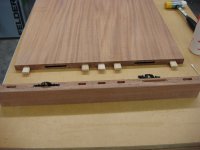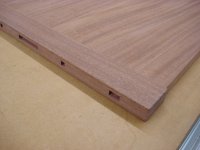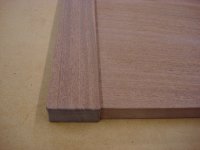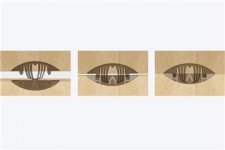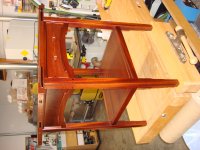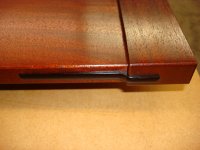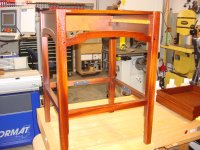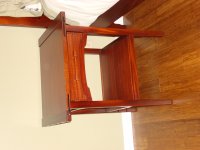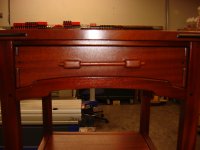stvrowe
Member
- Joined
- Jan 27, 2007
- Messages
- 834
... to attach a breadboard end to a table top. (Gotcha [big grin])
I used the Domino 500 and Lamello Zeta P2 to attach breadboard ends to a table top. I used 8x50mm Dominos combined with the Lamello Tenso connectors to attach the breadboard. All 5 Dominos are glued into the top core and the center 3 are also glued into the breadboard end. The Dominos closest to the core ends are allowed to float in the medium domino slot milled in the breadboard. The Tenso fastener allows lateral movement but most importantly, provides a constant clamping force to keep the breadboard end snuggly attached to the top core with 35 lbs of clamping pressure at the outer areas. No clamps were used or harmed during this process.
[attachimg=1]
[attachimg=2]
[attachimg=3]
[attachimg=4]
I used the Domino 500 and Lamello Zeta P2 to attach breadboard ends to a table top. I used 8x50mm Dominos combined with the Lamello Tenso connectors to attach the breadboard. All 5 Dominos are glued into the top core and the center 3 are also glued into the breadboard end. The Dominos closest to the core ends are allowed to float in the medium domino slot milled in the breadboard. The Tenso fastener allows lateral movement but most importantly, provides a constant clamping force to keep the breadboard end snuggly attached to the top core with 35 lbs of clamping pressure at the outer areas. No clamps were used or harmed during this process.
[attachimg=1]
[attachimg=2]
[attachimg=3]
[attachimg=4]

